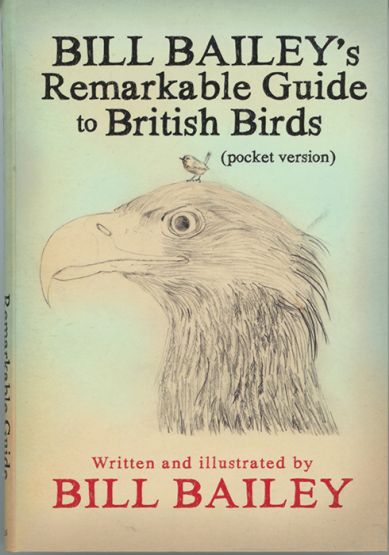FARNE ISLANDS & INNER FARNE
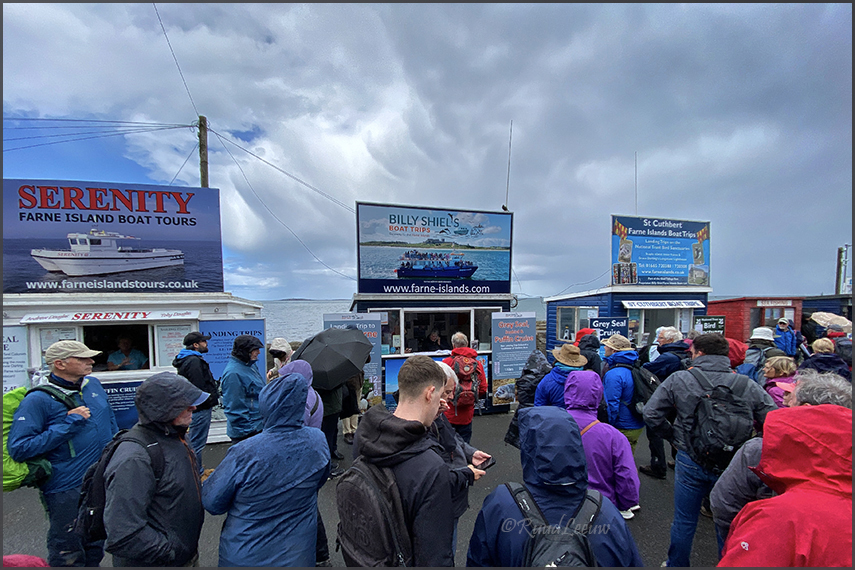
I had booked with Billy Shiel's for the top deck could also protect against the elements and I like an elevated
platform for my photography. Found it a good choice. www.farne-islands.com
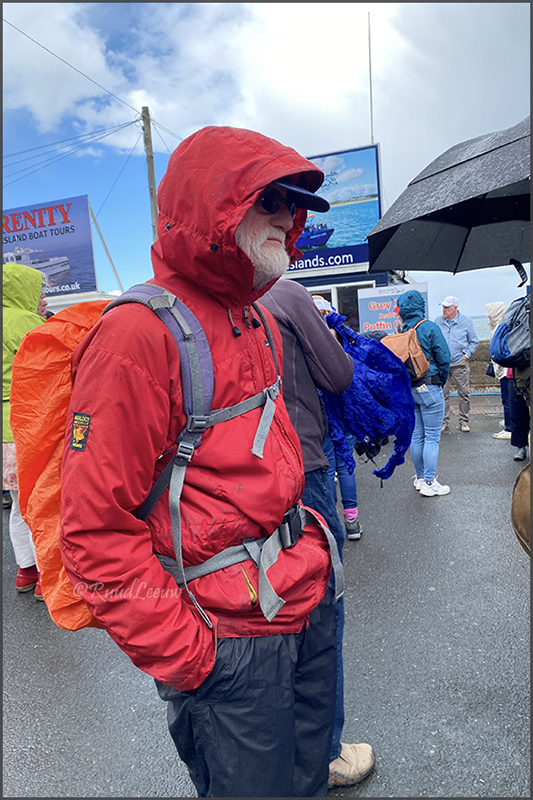
Some know how to dress for the worst sorts of weather.
The boat fare does not include the National Trust Landing fee on Inner Farne island. This fee (Adult: £13) is
payable at
the National Trust kiosk on the harbour (beside our pictured booking offices) before departure.
The landing is subject to 'conditions', weather but also been closed due to Avian Flu in recent years.

That facial expression: priceless, isn't it?
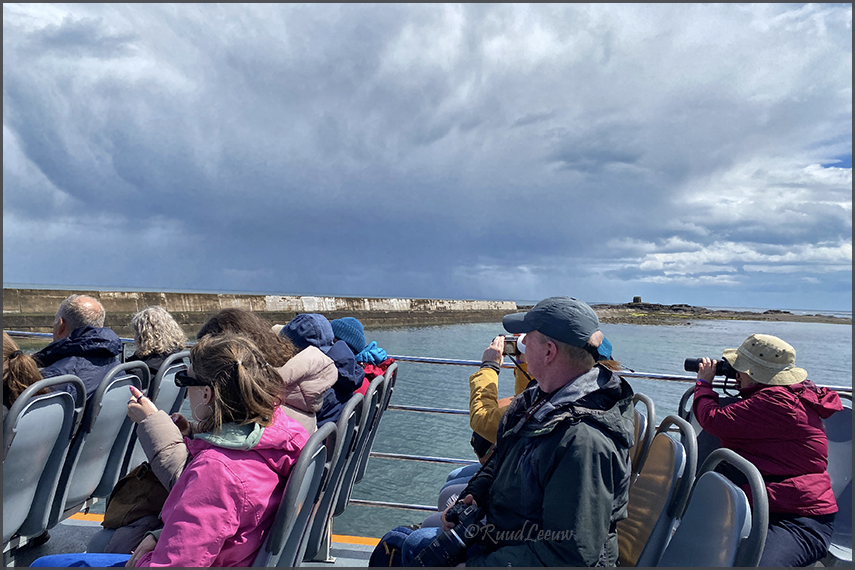
While waiting we did get rain and hail but when we sailed it was mostly dry. That shower had just passed us...

Birds which are present include Puffins, Guillemots, Razorbills, Sandwich Terns, Common Terns, Roseate Terns,
Arctic Terns, Shags, Cormorants, Kittiwakes and Eider Ducks.
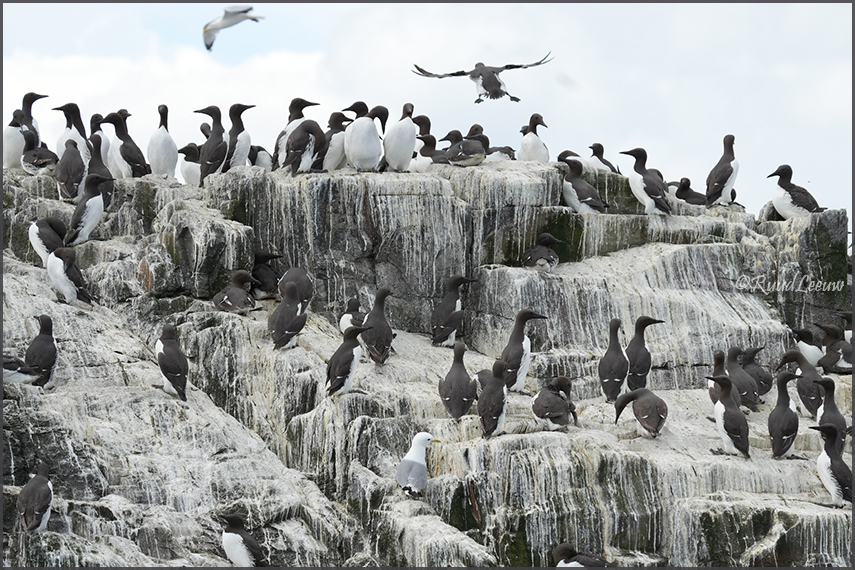
Note that this is a colour photograph..!

A razorbill with a number of puffins.
'The puffins are stocky, short-winged, and short-tailed birds, with black upper parts and white or brownish-grey underparts. The head has a black cap, the face is mainly white, and the feet are orange-red. The bill appears large
and colorful during the breeding season. The colorful outer part of the bill is shed after the breeding season,
revealing a smaller and duller true bill beneath. Because of their striking appearance they are also referred to
as 'clowns of the sea' and 'sea parrots'.' [¬ en.wikipedia.org:_Puffin]
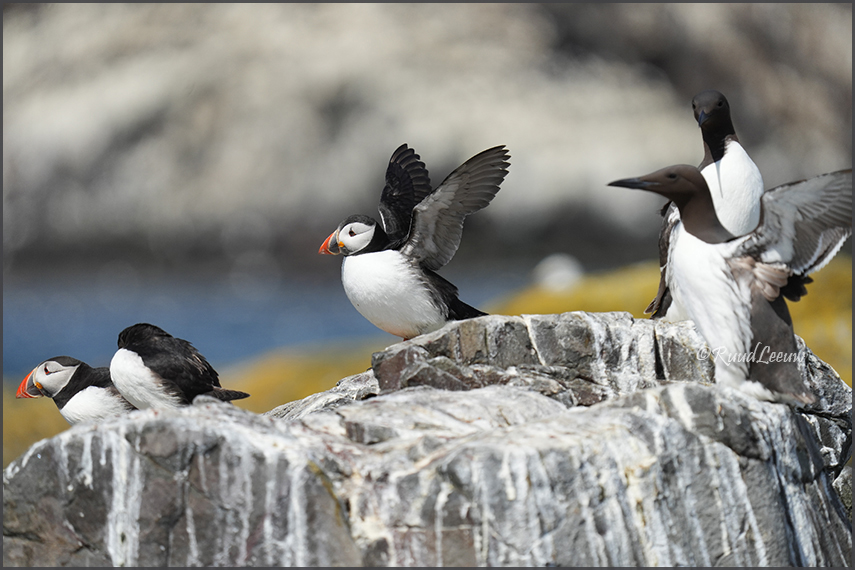
This trip lasts approximately 2½ – 3 hours (ours more like 3hr15), including one hour spent on Inner Farne.
The tour includes a cruise around all the Farne Islands, viewing the sea birds on the cliff faces, visiting the Grey Seal colonies and also follows the route Grace Darling and her father took during their heroic rescue in 1838.
We had one hour
at Inner Farne, as was planned. We considered ourselves luck with the weather. |

Inner Farne in the distance
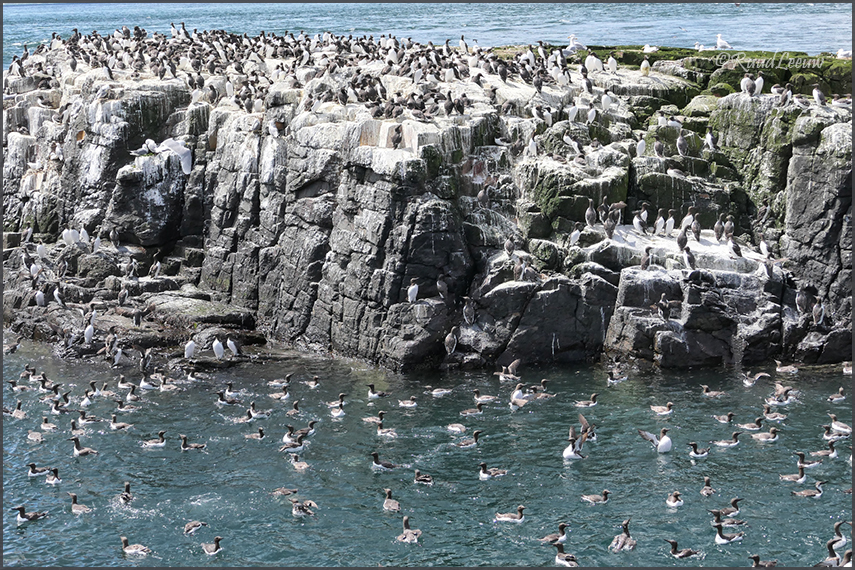
XXX

It was hard to stay upright holding the camera + lens steady with
both
hands, the boat moving in every and all directions. So it was rapidly shooting
a few photos and then grabbing a railing again for support.
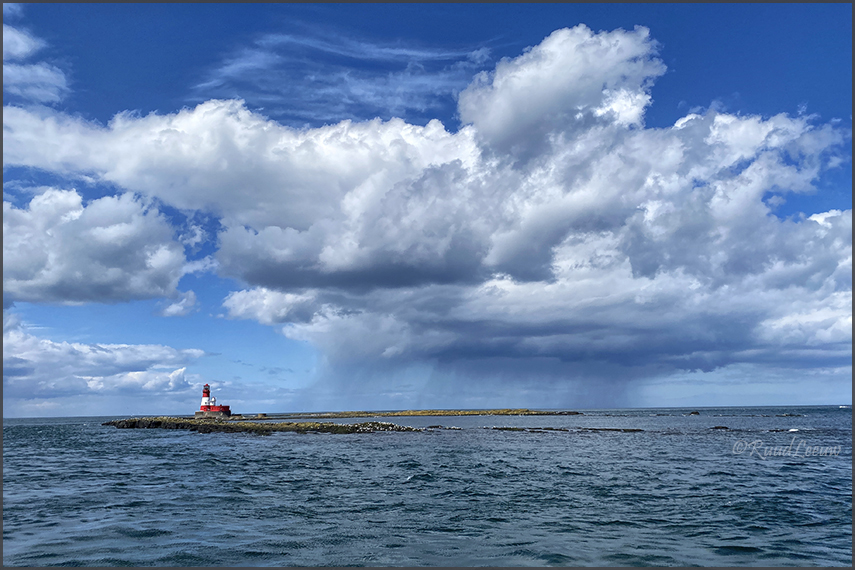
That shower never came close and we had the brightest of sunlight.

The grey seals were curious and checked us out ☺
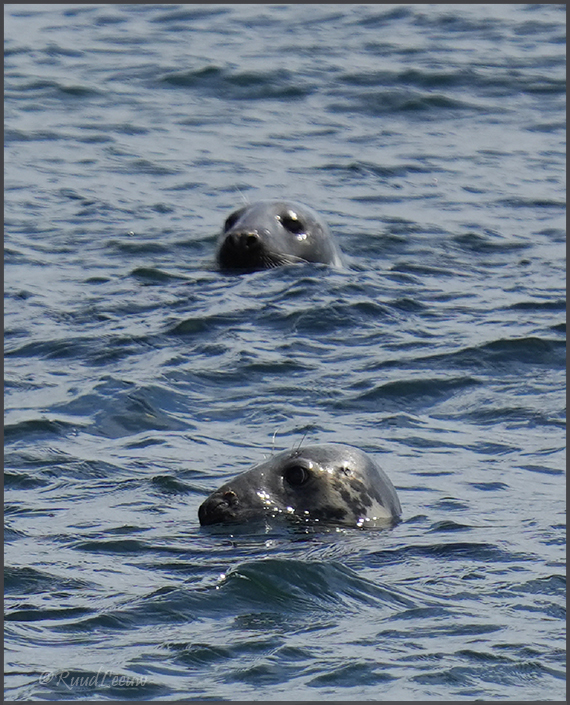
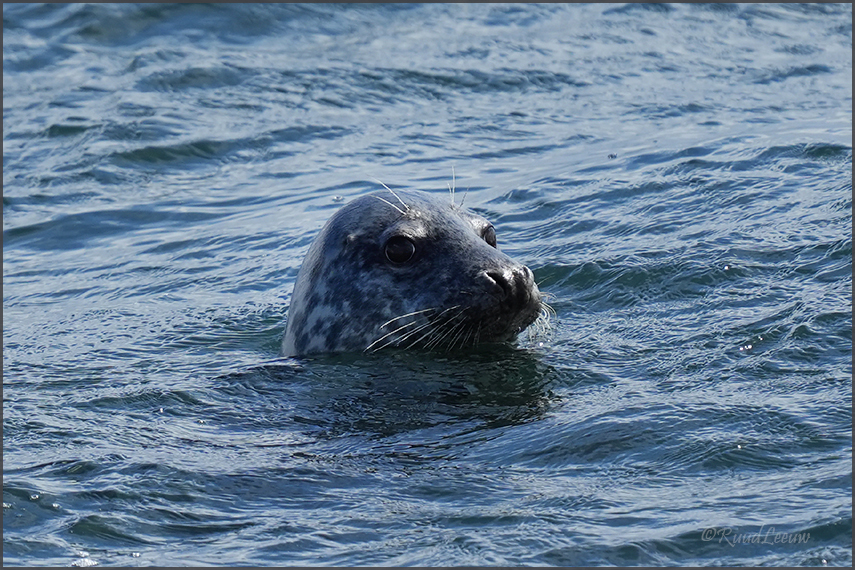

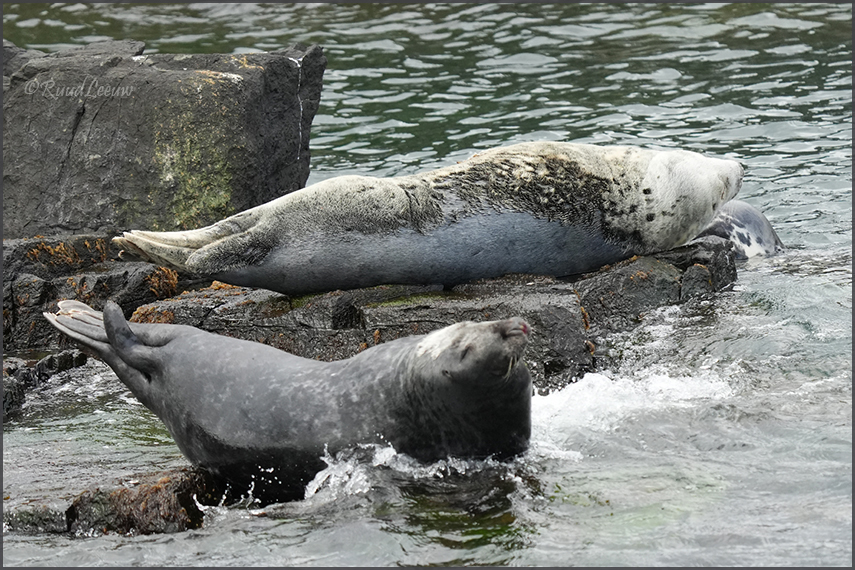
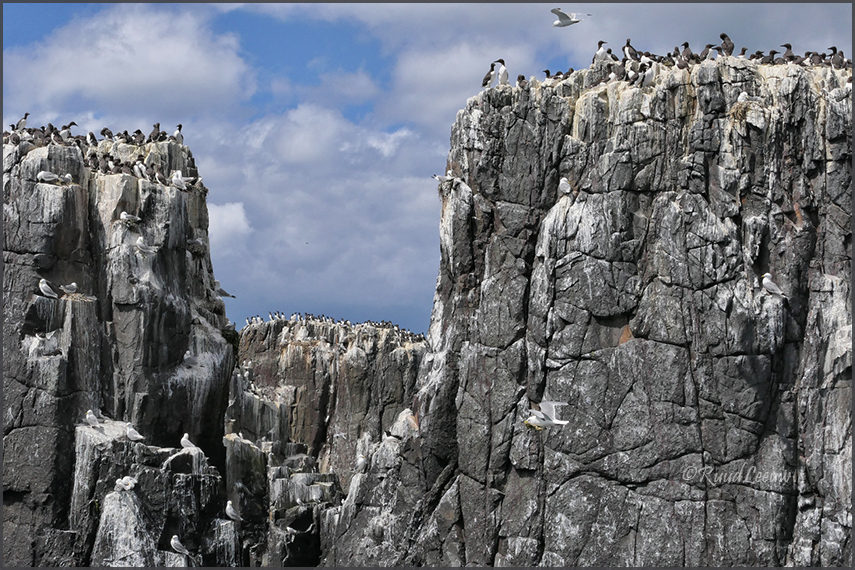
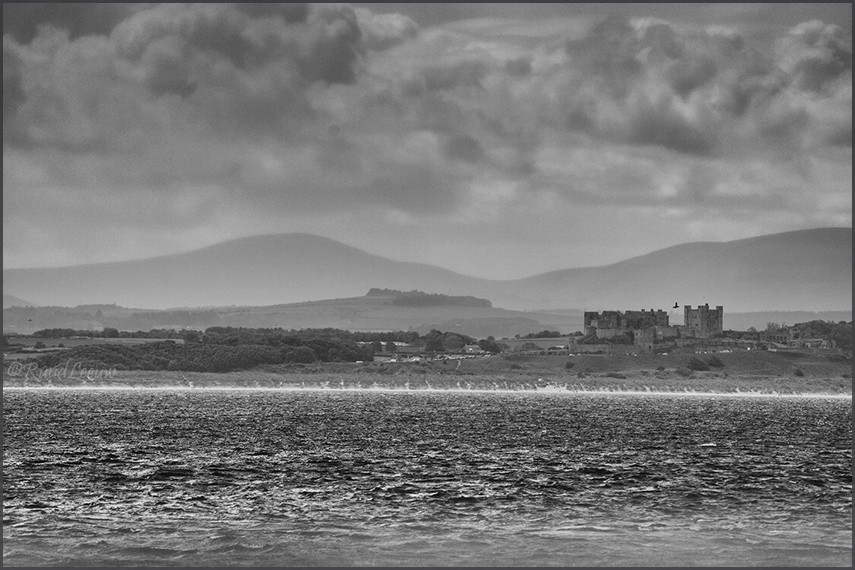
We glanced back at the coastline, including Castle Sumburgh, where a shower passed again.
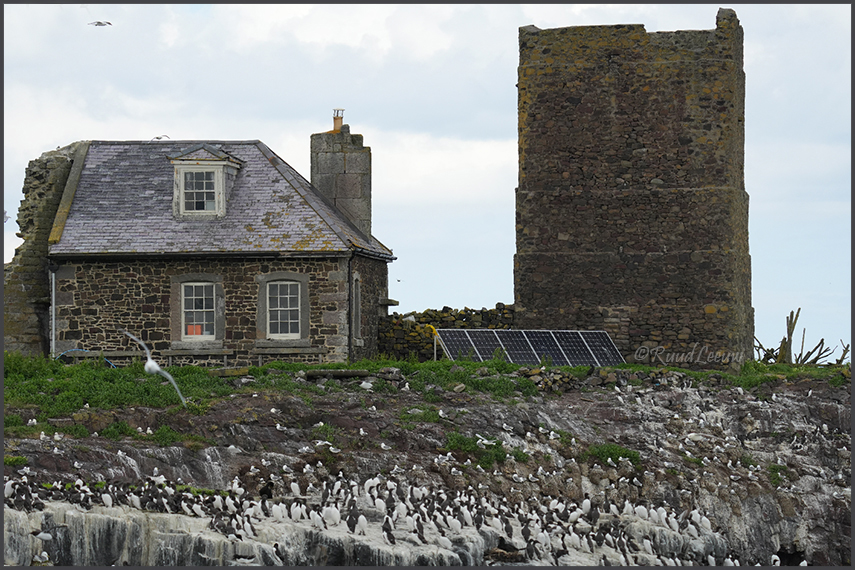
Prepare for landing! This time I had booked a boattrip including a landing
at Inner Farne.
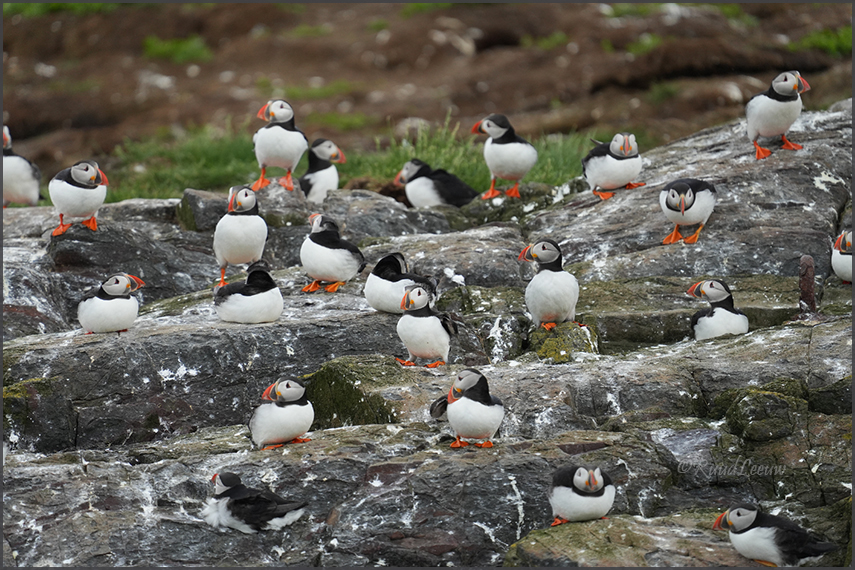
There was a large amount of Puffins here and I thought the boattrip successful even before the landing @Inner Farne
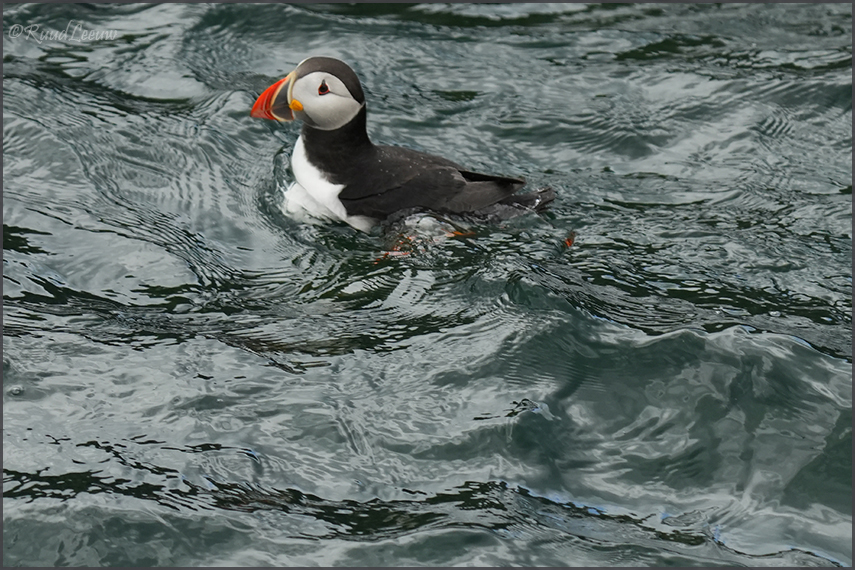
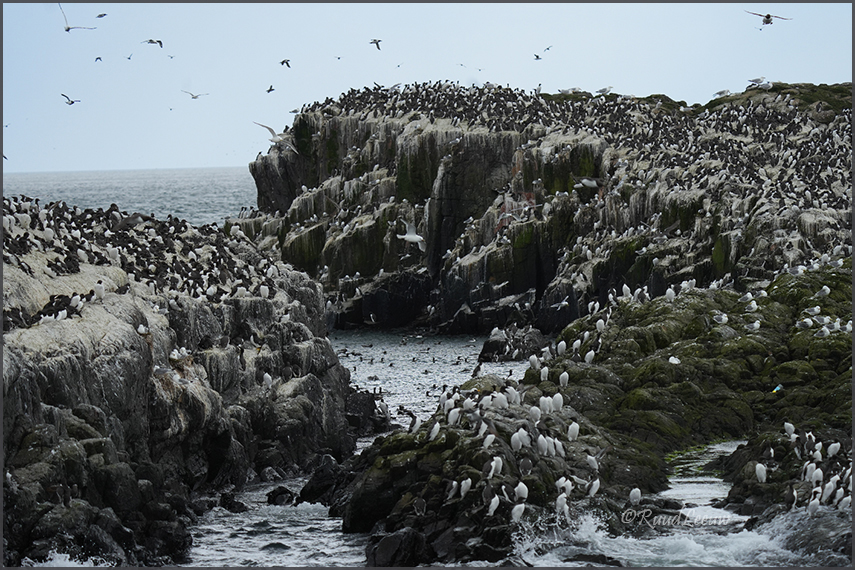
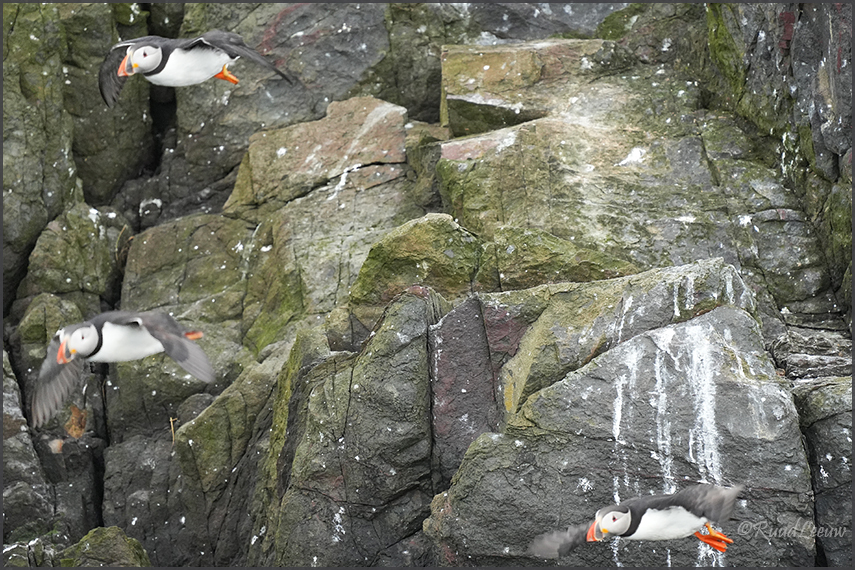
A formation of three making their way in search of food
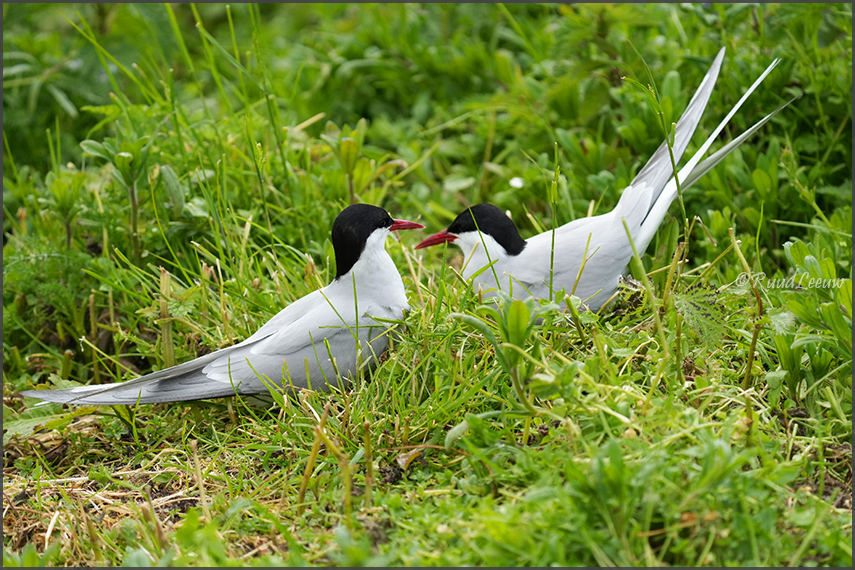
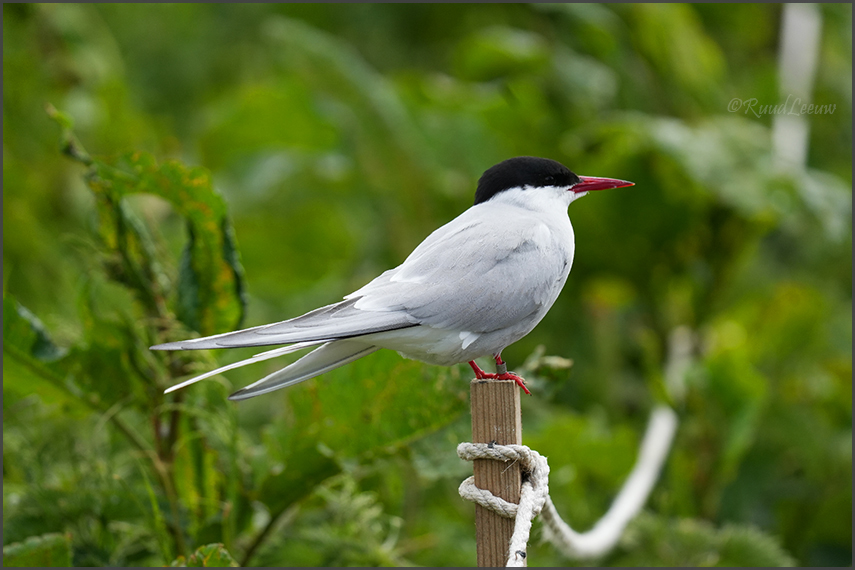
This Arctic Tern was close to the path and minded my presence: it flew up and
dive bombed me! Fortunately I was wearing my 'beanie'
but still felt the thumping!

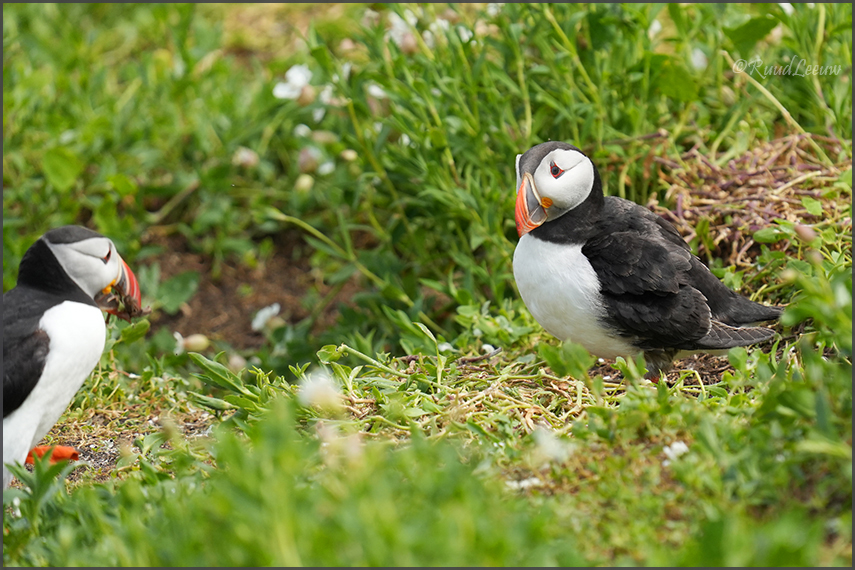
Bringing in nest material. June 6th seemed to be early for the nesting Puffins, we may gamble for July next time..?

It is amazing that these Puffin couples know how to meet again after their stay at sea, at the same burrow
where they had their previous nests. Also note that the burrows are so deep it is pitch
black in there and
he young ones don't see their parents until they climb out of the burrow. All for their safety of course.
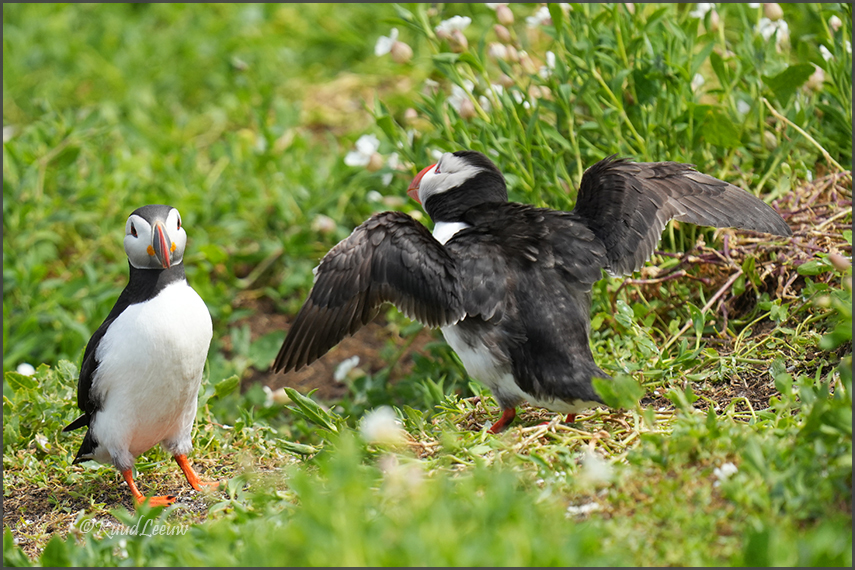
"Well, I'll fly out for some more.."
Puffins form long-term pair bonds or relationships. The female lays a single egg, and both parents incubate the egg and feed the chick (or 'puffling').
The incubating parent holds the egg against its brood patch with its wings. The chicks fledge at night.
After fledging, the chicks spend the first few years of their lives at sea, returning to breed about 5 years later. Puffins in captivity have been known to breed as early as 3 years of age. [¬ Wikipedia] |
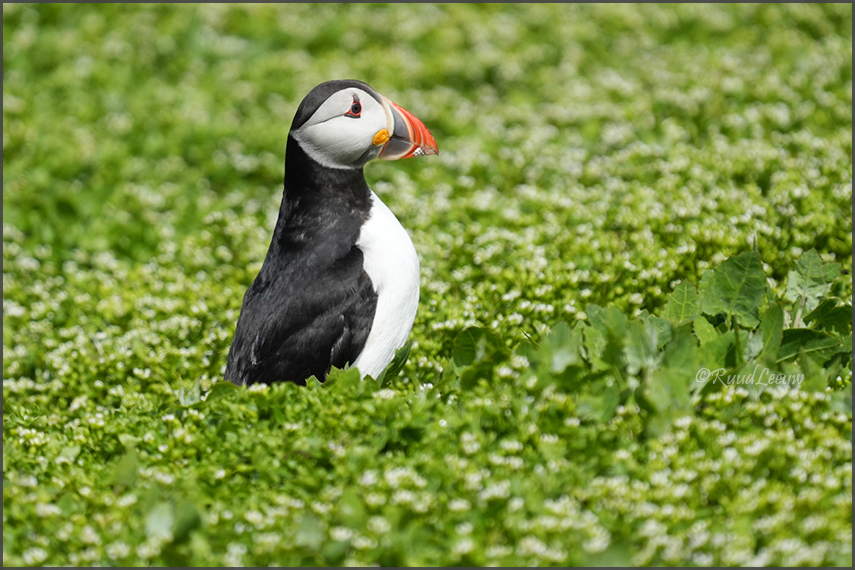
Master of its domain!

I was well
pleased with the results of the Sony 200-600 on my A7IV
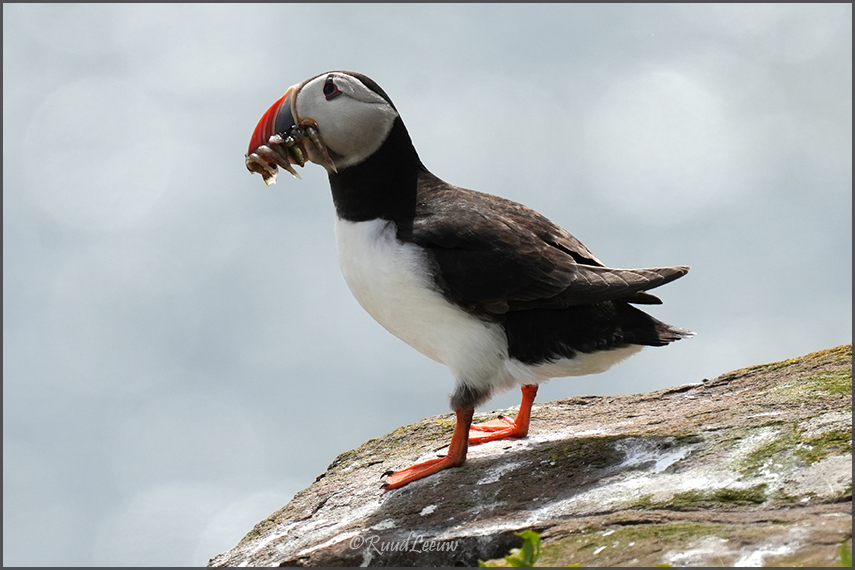
A relative small number of Puffins brought in food, perhaps the early 'settlers' that had pufflings.
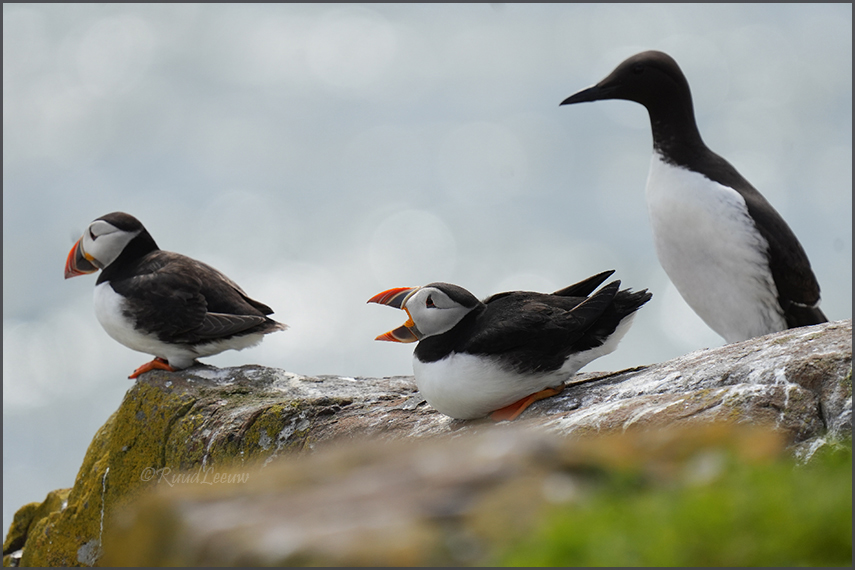
Shouting out to its partner?
| 'Atlantic puffin populations drastically declined due to habitat destruction and exploitation during the 19th century and early 20th century. They continue to be hunted in Iceland and the Faroe Islands.
The Blasket Islands off the Irish coast of County Kerry saw a serious decline due to harvesting.
Until the islands were abandoned in 1953, the islanders often lived just above starvation level. As a result, the puffins were hunted in large numbers for food.
The Atlantic puffin forms part of the national diet in Iceland, where the species does not have legal protection.' |
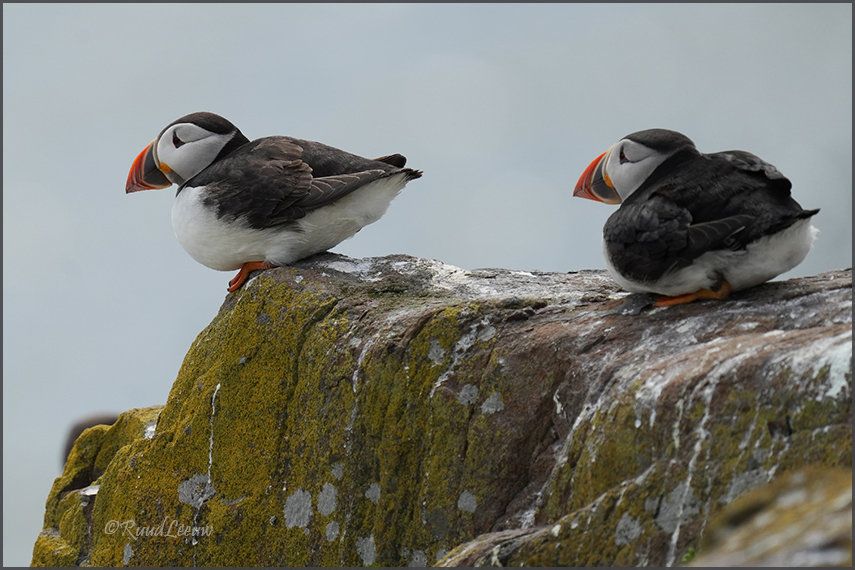
There is no cure for so much cuteness.
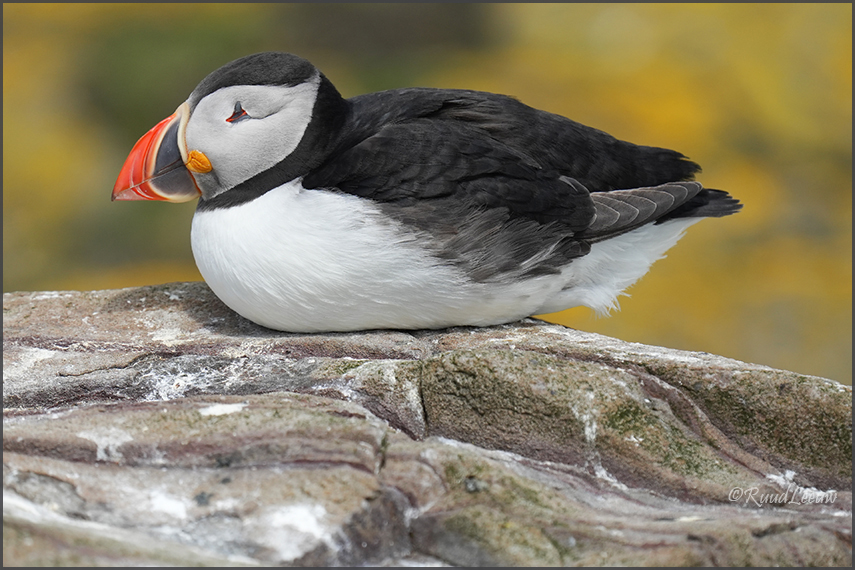
It's good to learn that they are not endangered and inspite of the Avian Influenza
in recent years and
climate change effecting their food supply (sand eels), their number is allegedly on the rise again.
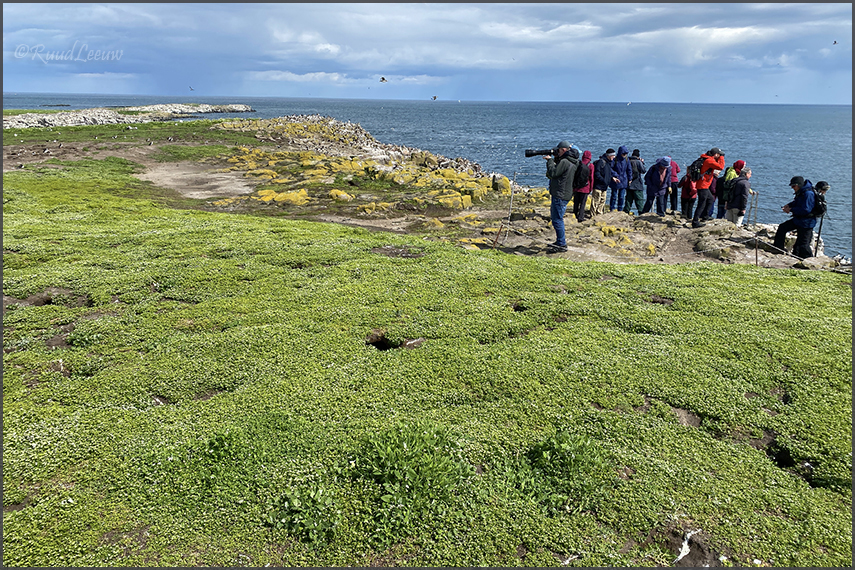
The landing on Inner Farne amounts to walking a short path from the landing to the other side
and while
retracing a brief circle route back to the two structures.
Breeding grounds are roped off.
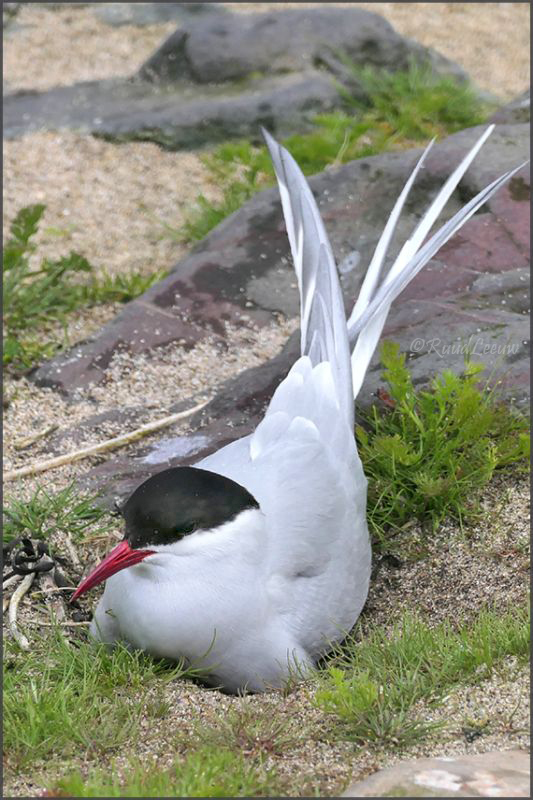
Arctic Tern


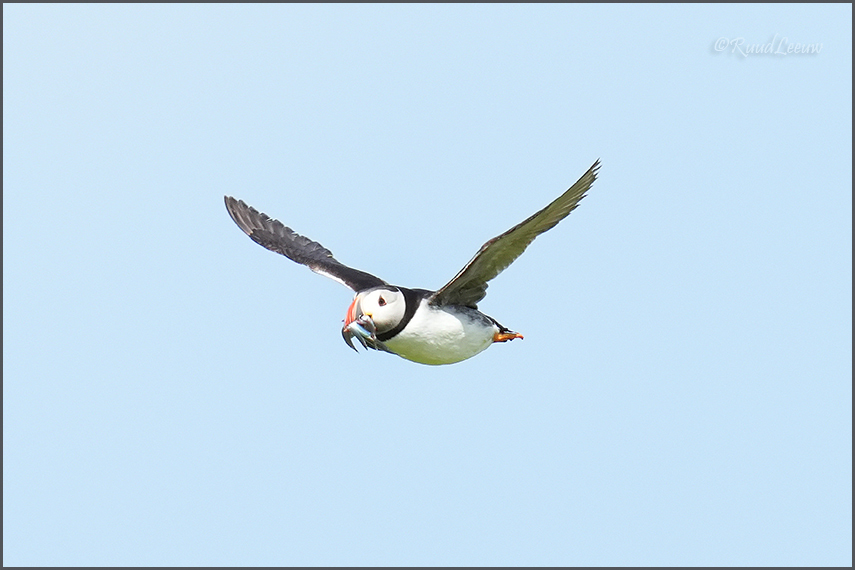
A Puffin bringing in food for its 'puffling'.
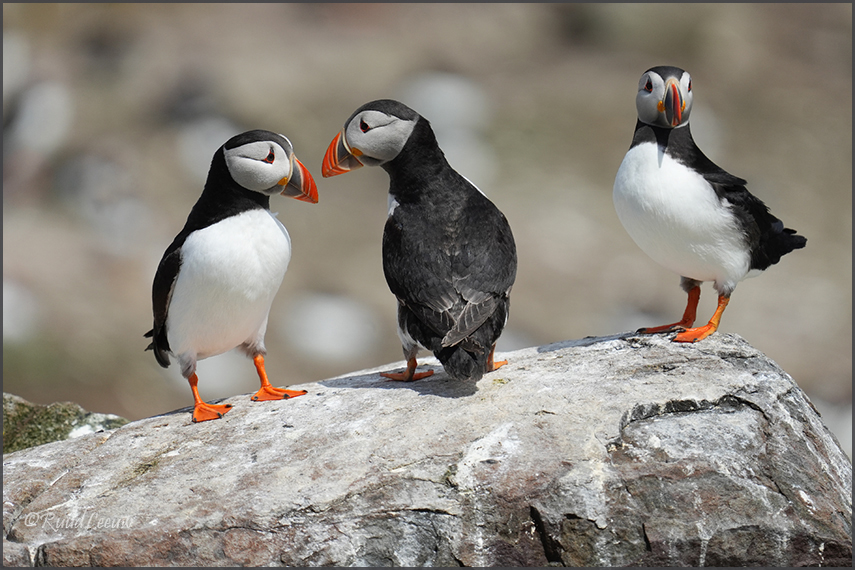
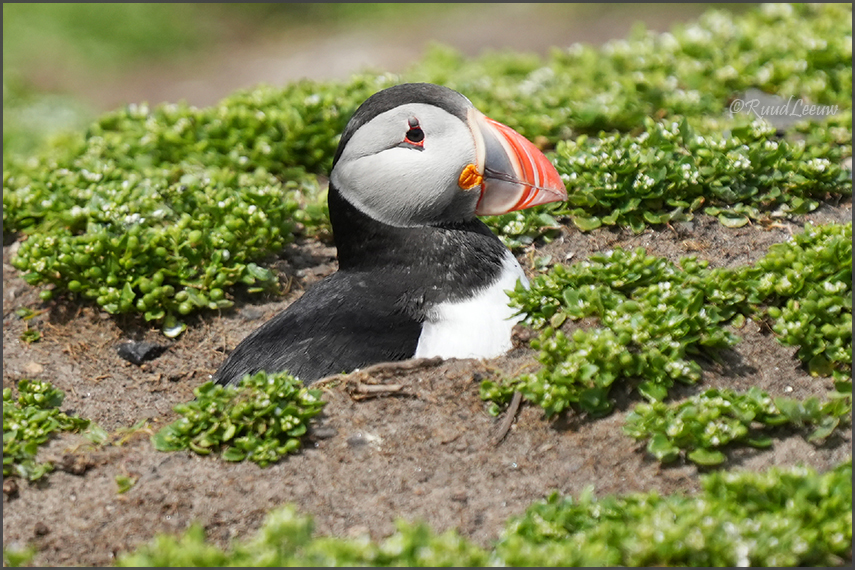
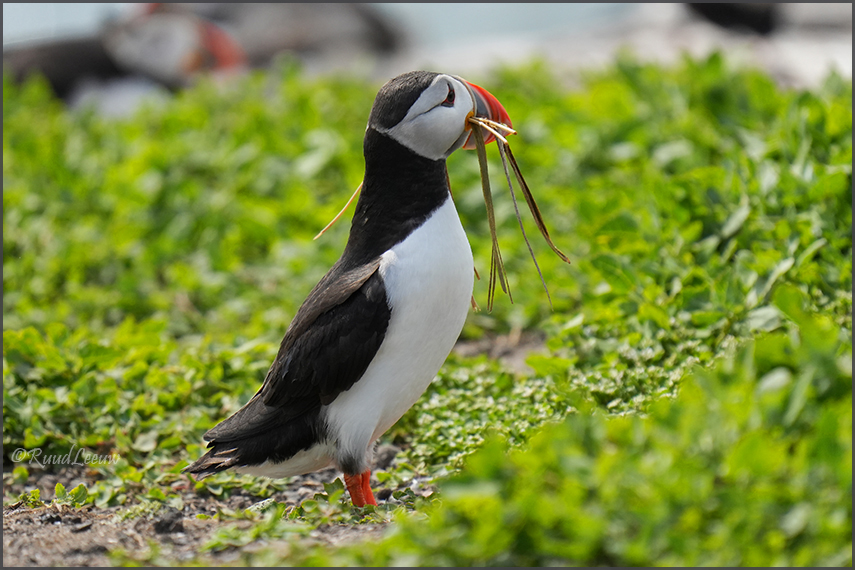
Bringing new material, their old burrow probably could use some fresh lining.
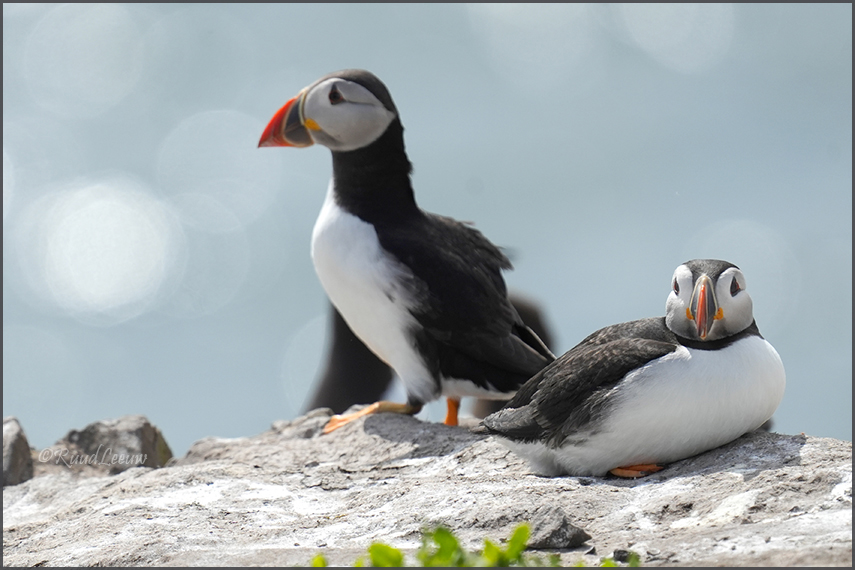

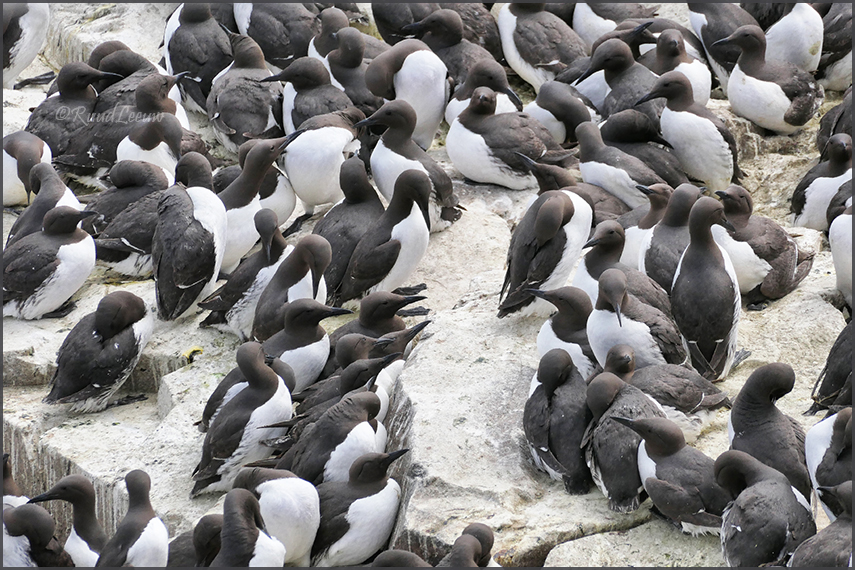
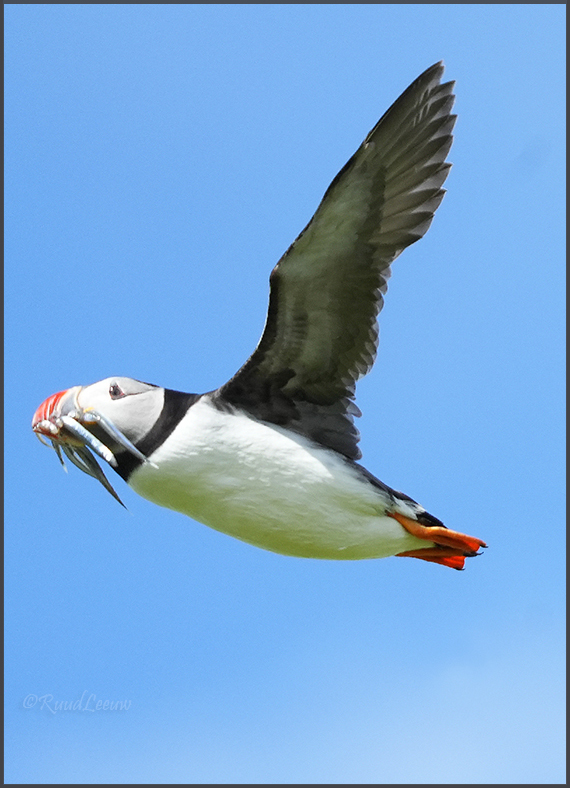
I found it hard to get decent results of these Puffins flying in: they are so fast and so small!
Their wings move at a great speed so even when I got it in focus, the wing might be down and awkward.
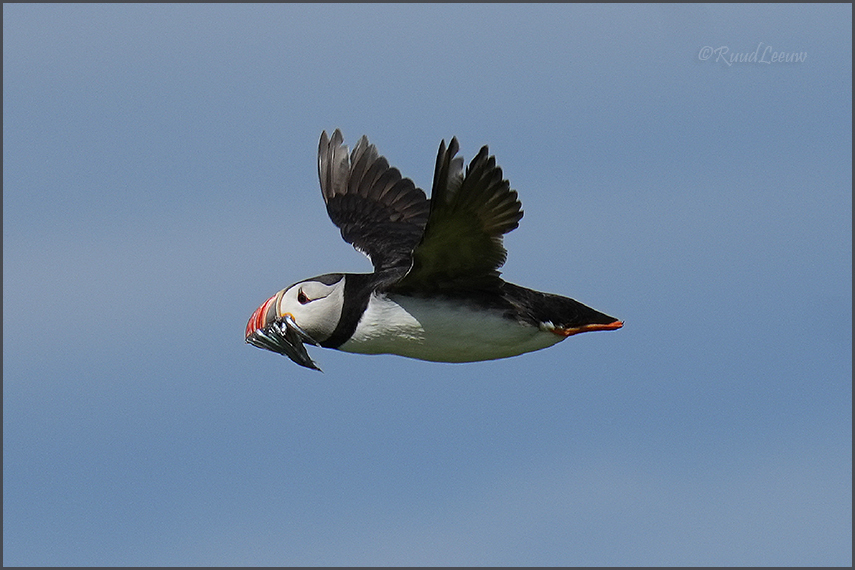
'Like many auks, puffins eat both fish and zooplankton but feed their chicks primarily with small marine fish several
times a day. The puffins are distinct in their ability to hold several (sometimes over a dozen) small fish at a time, crosswise in their bill, rather than regurgitating swallowed fish. This allows them to take longer foraging trips
since they can come back with more food energy for their chick than a bird that can only carry one fish at a time.
This behavior is made possible by the unique hinging mechanism of their beak, which allows the upper and lower
biting edges to meet at any of a number of angles.' [¬ Wikipedia]
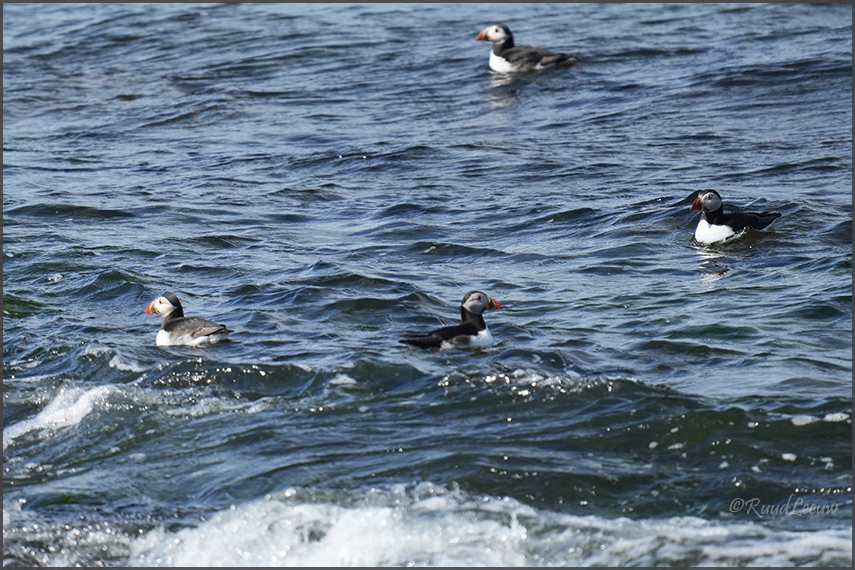

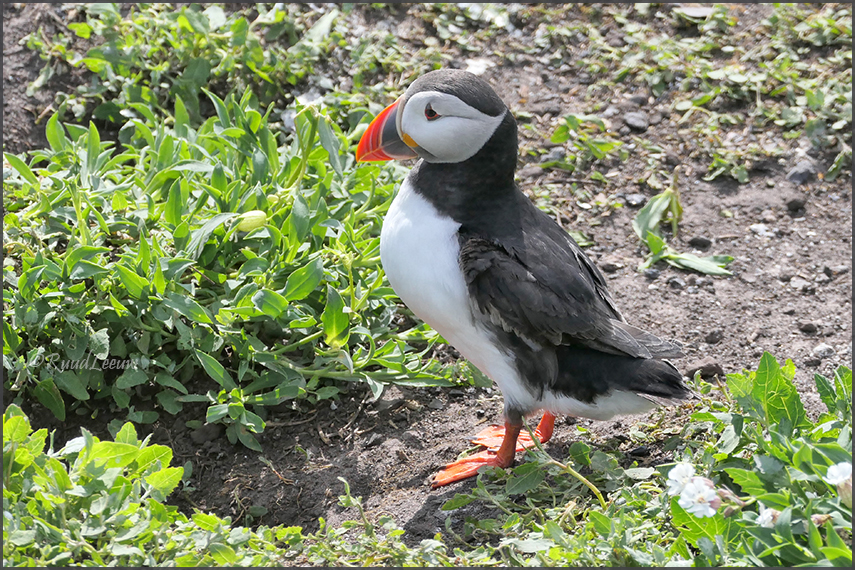
A good thing there was only an hour here for us, the camera loves them!
For this year we'll leave them to make their nests and lay an egg (only one each year). But I hope to return.
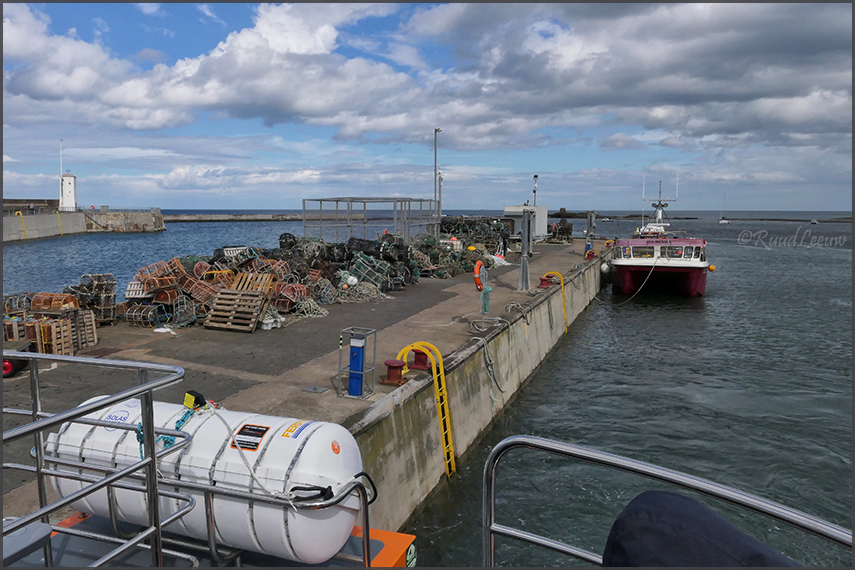
Arriving back at the docks
of Seahouses, it has been brilliant!
 Photos © Ruud Leeuw
Photos © Ruud Leeuw
